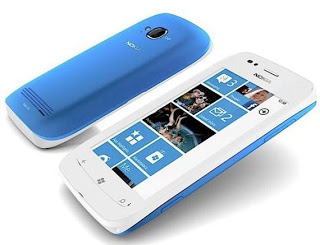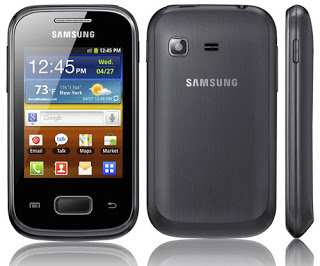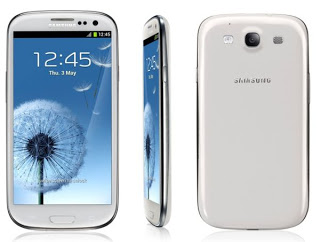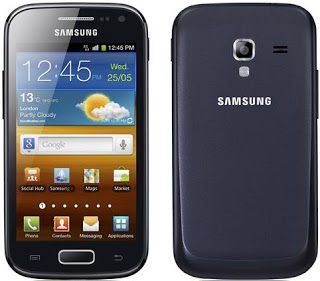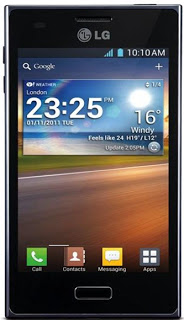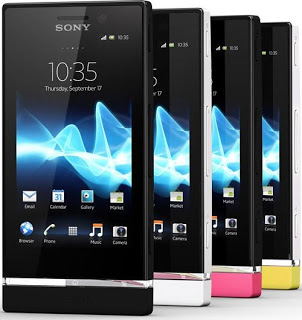For a device in its genre, Nokia Lumia 710 is a big contender considering all the flourished specs that come on-board. This handset goes toe-to-toe with Samsung’s Omnia M S57530, both run on easy-to-use Windows Phone 7.5 Mango, have the same 800x480p screen resolution, same 5.0Megapixel camera; though Nokia Lumia 710 boasts of a superior 1.4GHz processor compared to Omnia M’s 1GHz but its TFT screen doesn’t match Omnia M S57530’s Super-AMOLED panel. Basically, it depends on what you’re looking for in a handset that’ll separate the two devices suitability. From a layman’s perspective, Nokia Lumia 710’s clock speed has a better performance ratio compared to Omnia M; however, the difference between the two screen technologies is like day and night, so you’d better decide on your preferences first before you’re in a limbo. I wouldn’t say Nokia Lumia 710 is the sleekest handset we’ve seen; however, it’s easy to use and Microsoft’s software makes it even more responsive than most rivals.
Nokia Lumia 710 Windows Phone Review
Samsung Galaxy Pocket S5300 Review
Looks like Samsung is not just about to leave any screen size un-exploited especially after the release of Galaxy Pocket S5300 budget Android smart phone. It has a small 2.8inch screen though runs on the most recent and popular Android v2.3 Gingerbread OS. We only get to see such small displays on devices with a QWERTY keypad sharing the same front panel; however, that’s not the case with Samsung Galaxy Pocket S5300. This phone is not only tiny, but suitable for cheapskates out there looking for an android phone; as you’d expect, several compromises were enforced to retain low prices despite a top tier operating system underneath. For about $100, you’ll part with a 2.0Megapixel camera, 832MHz processor and a staggering 3GB worth of internal storage. We’ll forgive a lot for a device in this price range, and I’d describe the enclosed specs as modest-to-the-max; though max isn’t a term I’d casually use unless the device is considerably cool.
Samsung Omnia M S57530 Review
Despite all the hype and attention given to Android based devices, Samsung is slowly but effectively updating its Windows phone portfolio as well, the latest being Samsung Omnia M S57530 smart phone. As much as android OS is growing tremendously, there are still gadget junkie’s with unquestionable test for windows OS, Samsung Omnia M S57530 may not win any awards in this segment; however, it has enough strengths to put up a good fight for a place in Microsoft’s newest OS, it has all the goodies you’d expect in a mid-range smart phone. We loved its design on first-look, something you’d least expect on most Samsung handsets and the Super AMOLED screen can’t be ignored. The phone is fairly fast with excellent connectivity and Zune software puts it above the line, we can’t ignore the Xbox integration which’s as promising as you’d expect though we had issues with its un-expandable memory and awkwardly located power button.
Samsung I9300 Galaxy S3 Benchmarks Tested
Samsung’s Galaxy range lineup got a fresh heads-up with the unveiling of 19300 Galaxy S3 smart phone which’s expected to succeed the all-time favorite Galaxy S2. How the device performs in comparison to its predecessor is a matter of time; however, anyone can tell Samsung 19300 Galaxy S3 has serious specs, no question about that, but its design has elicited mixed sentiments both positive and negative. Aside from the design, Samsung 19300 Galaxy S3 comes with a whooping 4.8inch 720p display screen compared to a 4.3inch panel on its predecessor and a snappier Quad-core processor. From outside, it looks just like any other Galaxy sibling except for its design that features smoothed and rounded corners rather than the rectangular look on its wildly popular predecessor Galaxy S2. Samsung ditched the lumpy bits found on S2 in favor of a curved back-cover with substantial amount of chrome decorations along edges; however, the home button remained untouched just below the screen alongside other touch-sensitive controls.
Samsung 19300 Galaxy S3 has a large, gorgeous 4.8inch Super-Amoled screen capable of playing 720p videos, the screen’s enormous 720 x 1280 pixels resolution results in more vivid and sharp text, icons and images. 19300 Galaxy S3 is shipped in two variant colors; blue and white, the blue version features a brushed metal effect while its white counterpart looks mostly glossy; however, it’s typical for Samsung to release phones in different colors at a later date and we expect more of this for Galaxy S3. AMOLED screens are desired for their ability to render true deep blacks since they have no back-lighting as each pixel is lit individually as opposed to TFT screens which have a back-lighting that fades black colors to look grayish. You’ll therefore experience eye-searing colors on the latest Samsung 19300 Galaxy S3 compared to TFT handsets on the market.
Above everything is a Voice control feature dubbed S-Voice that goes toe-to-toe with iPhone’s Siri, this functionality comes within Android’s face unlock capability; apart from your face, Galaxy S3 will need to hear your voice as well before unlocking. Other functionalities supported by S-Voice include setting an alarm, making a call, taking a photo or controlling music playback. S3 sports a snappier Quad-core processor clocked at 1.4GHz and a bumped up 8.0Megapixels camera with every option we’ve come across. The face detection feature prevents your device from going to sleep while using.
Samsung 19300 Galaxy S3
- Operating System:Android v4.0.4 Ice Cream Sandwich
- Processor:Quad-core ARM Cortex-A9 1.4 GHz processor
- Display : 4.8inch (720 x 1280 pixels) (306ppi) Super-AMOLED Capacitive screen
- Primary Camera: 8.0megapixel (3264×2448) Auto-focus, LED Flash, 2.0MP front camera
- Storage: Up to 64GB MicroSD, 768MB RAM, 4GB Internal storage
- Connectivity: MicroUSB v2.0, Bluetooth v3.0 with A2DP
- Internet: HSDPA 21 Mbps, HSUPA 5.76 Mbps, WiFi 802.11b/g/n WiFi hotspot
- Other ft: Geo-Tagging, Sensors: Proximity, Accelerometer, Compass
- Battery: Standard Lithium-Ion 2100mAH
Samsung 19300 Galaxy S3 Price in Kenya: (unavailable)
Samsung Galaxy 18160 Ace 2 Review
Samsung Galaxy Ace 2 18160 comes as a follow up to the segments favorite, Galaxy Ace 5830; whether or not it’ll perform as good is a game of wait and see. The phone however poses some interesting improvements on its predecessor which proved to be a rare Android monster that could be afforded by just any serious Android smart phone fan. Despite having almost everything you’ll find on a mid-range smart phone, the original Galaxy Ace suffered from an over pixilated display due to a minimal 320×480 pixels screen resolution on a 3.5inch panel. The new Samsung Galaxy 18160 Ace 2 comes with a more ramped up 480×800 pixels screen resolution that renders sharp text and icons compared to its sibling. Although Android v2.3 Gingerbread shipped on Galaxy 18160 Ace 2 may not get our condemnation, we expected a more recent Ice Cream Sandwich; however, at least v2.3 is still better than v2.2 shipped on the original Ace.
Huawei U8800 Ideos X5 Hands-On Review
Huawei U8800 Ideos X5 has all it takes to be the preferred smart phone in its category; it has some of the most desired features which are available only on pricy devices such as a 5Megapixel camera and a decent 800×480 pixels resolution for a 3.8inch screen which makes text and images look sharp and smooth. Huawei U8800 Ideos X5 may be the cheap powerful monster everyone is looking for, but it has its own flaws on areas that count such as a mutilated Android’s interface instead of preserving the operating system’s good looks. Huawei could have played safe by retaining the original Android’s interface; however, by introducing its own version of skin, we’re skeptical on whether most users will find it fascinating enough. There are two versions of Ideos X5; one with 4GB internal storage and the other has 2GB onboard storage space, the 2GB version has been retailing in Kenya for a while now, going at Kshs.18999 at Safaricom retail shops.
LG Optimus L5 E610 Smart Phone Review
LG Optimus L5 E610 may not have the best hardware in its genre but packs the latest version of Android Ice Cream Sandwich right from the box. It has an excellent design with average processing capability translating to an affordable price tag. We’ve seen devices housing superior hardware shipped with a previous version of Android OS such as Gingerbread and Froyo; in most cases, there’re scheduled upgrades to a newer version though such upgrades are not always guaranteed. It’s therefore very considerate for LG to load ICS on L5 E610 right from the factory. LG Optimus L5 E610 is slated to cost less than most devices with similar features; however, some notable compromises were enforced to achieve the same. It has an underpowered 800MHz processor instead of a 1GHz found on its peers such as Optimus L7 P700 and a low 320×480 pixels screen resolution. Whether a device is stylish or not, it’s up to you as an individual; however, LG Optimus L5 E610 surpassed our benchmarks with the coolest design in its category.
Sony Xperia U Phone Review
We expected to see Sony mobile handsets after its break away from Ericsson, though not this soon, Sony Xperia U is the latest addition to the Xperia line-up packing some interesting goodies at a reasonable price. If you’re looking for a cheaper smart phone with impressive hardware that doesn’t compromise where it counts, Sony Xperia U is a big contender. Xperia U may not match high-end devices such as Samsung Galaxy Noteand LG Optimus 4X HD P880but what it lacks is stature, its performance is good enough to make up for ignorable flaws. It packs a 1GHz Dual core processor and a 3.5inch display screen, which’s not something you’d find on most mid-range devices on the market. Apart from the hardware component, Sony Xperia U stunned us with beautiful snazzy colored lights illuminating the transparent strip located at its bottom, the colored bottom caps are changeable too. The Xperia range is famous for outstanding designs and in this case, Sony Xperia U is not an exception.

